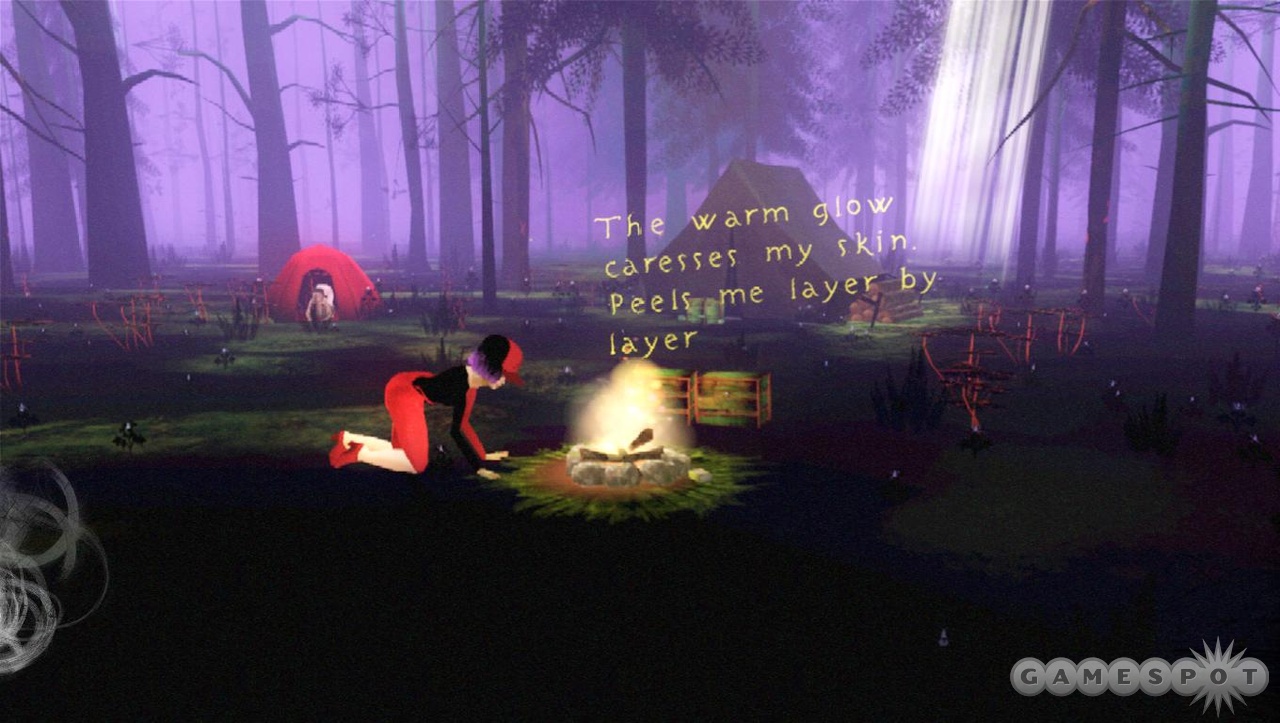"Which do you pick? Where you're safe, out of sight, and yourself, but where everything's wrong? Or where everything's right and you know that you'll never belong?" This line from Stephen Sondheim's musical Into the Woods mirrors one of The Path's many themes: whether the safest journey is the one worth taking. Actually, Sondheim's work has much in common with The Path; both tell familiar fairy tales but eventually lead you into the darkness of the woods, and both tell a unique version of the Little Red Riding Hood parable. But the similarities prove superficial. In The Path, a straightforward excursion to Grandmother's house becomes a symbolic examination of the path to womanhood, and sinister events remind us that wolves aren't always dressed in sheep's clothing. Six young women, six fateful parallel journeys, and six momentous visits to the gated house looming in the forest's shadows: Thus the stage is set for a metaphorical, moody, and menacing adventure in which you mustn't do what you're told.
This is heady stuff--literary, abstract, and deliberate in a way few games dare to be. As you lead each of the six red-clad sisters into the forest, it's soon obvious that The Path's single directive is not to be followed. Even if you're inclined to do the seemingly right thing (go to Grandmother's house, and don't veer from the path), you'll glimpse something that will lead you astray. It is actually likely to be someone--a girl in a white dress leaping and scurrying through the forest. Who she is, or even if she is real, is a mystery, but she'll become a welcome sight as you progress. She'll lead you to objects and areas of significance, and one of the girls interacts with her in delightful ways.
By its most basic definition, The Path is a game, but you interact with it in a simple and straightforward manner. Using the mouse alone, the mouse and keyboard, or a controller, you simply walk, run, or do nothing. If there is an object you can interact with, you let go of the walk button and automatically perform a contextual action. This may mean picking a flower, placing an item you discover in your basket (next to grandma's refreshments), or perhaps just sitting on a swing. The Path plays like an adventure game, yet there are no traditional puzzles to solve and no inventory to shuffle. You collect flowers (144 in all) and earn a letter grade at the end of each girl's solitary sojourn, but these are merely gestures, sticks without carrots. The pace is slow and thoughtful; if you're impatient or expect quick progress, roaming amid the trees without obvious rewards may frustrate you. You may groan during the slow stagger toward Grandma's gate, or bemoan the forced saunter in certain areas of interest.
Yet your interaction is crucial to The Path. The story isn't linear, but rather is created in fragments that you alone are expected to piece together. The inspired interface is blended into the exploration and story, giving you visual cues without distracting you. When you're close to an object you can interact with, a translucent image of the item will appear, and from time to time a subtle map overlay surfaces to show you the ground you've covered. The eerie visual style relies in part on similar effects that gently fade in and out of view, so these interface elements are not only gracefully integrated, but provide quietly creepy images that often offer additional insight into the girls' thoughts and emotions. Once you reach Grandmother's house, the images change--and so too do your interactions with them.
The visuals are elegant to be sure, but also occasionally stark and alarming. Developer Tale of Tales calls The Path a horror game, yet while there are moments when the visuals suggest horrible consequences to straying from the path, the horror is never blatantly illustrated. Nevertheless, the suggestions are powerful because of an unsettling atmosphere created by remarkable use of color and light. The greens and grays of the forest contrast with the saturated primary colors of a small meadow and a misty lakeside's neutral palette. The red hues are inescapable, and while their association with blood is obvious, the connection here is even more deeply personal for the sisters, whose names are all associated with the color. The soundtrack is an ideal match for the art. As paw prints pad across the screen, the lowest notes of a viola offer unsteady solace, and girlish hums hint at innocence waiting to be lost. These elements weave in and out of each other, so the harmonic repetition that seems so soothing at first develops in clever and delicate ways. When the music changes direction, it makes the events it accompanies all the more poignant.

A surprising epilogue episode gives more insight into the spiritual metaphors haunting The Path's murky forest, though you shouldn't expect the game to provide any straightforward answers. That doesn't mean that the answers aren't there, however; you'll find them woven into the red cloaks, between the keys of a piano, and in the glow of a television screen. You've probably never played anything quite like The Path, and if you value (or question) the literary merit of the game medium, it will inspire and stimulate you. You may not be one of those people; if you crave narrative clarity, distinct conclusions, and high levels of interaction from the games you play, you should proceed cautiously. But like a cragged tree featured in one of The Path's astonishing images, The Path is a work of frightening and exceptional beauty that will take root in your psyche as long as you're willing to nurture its growth.